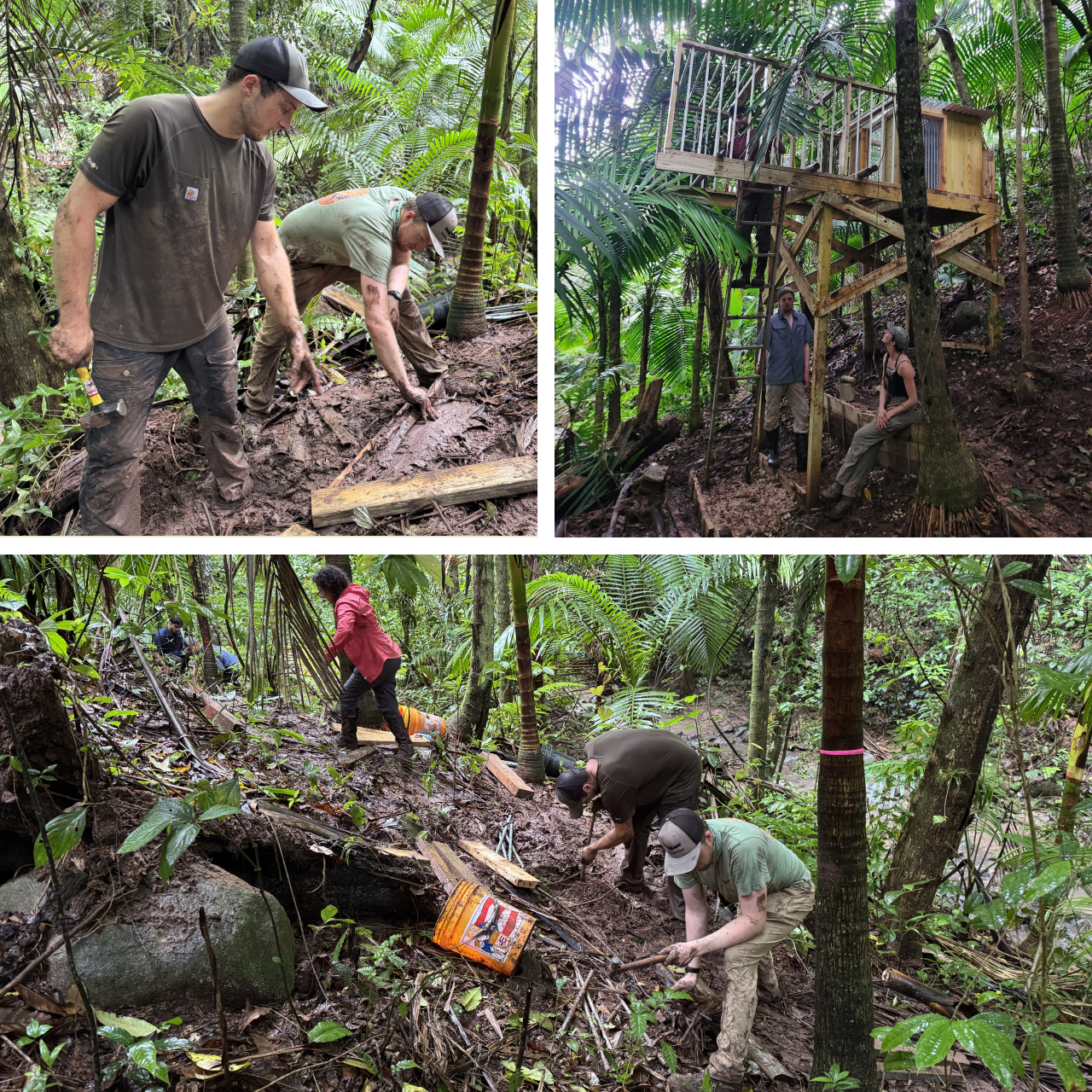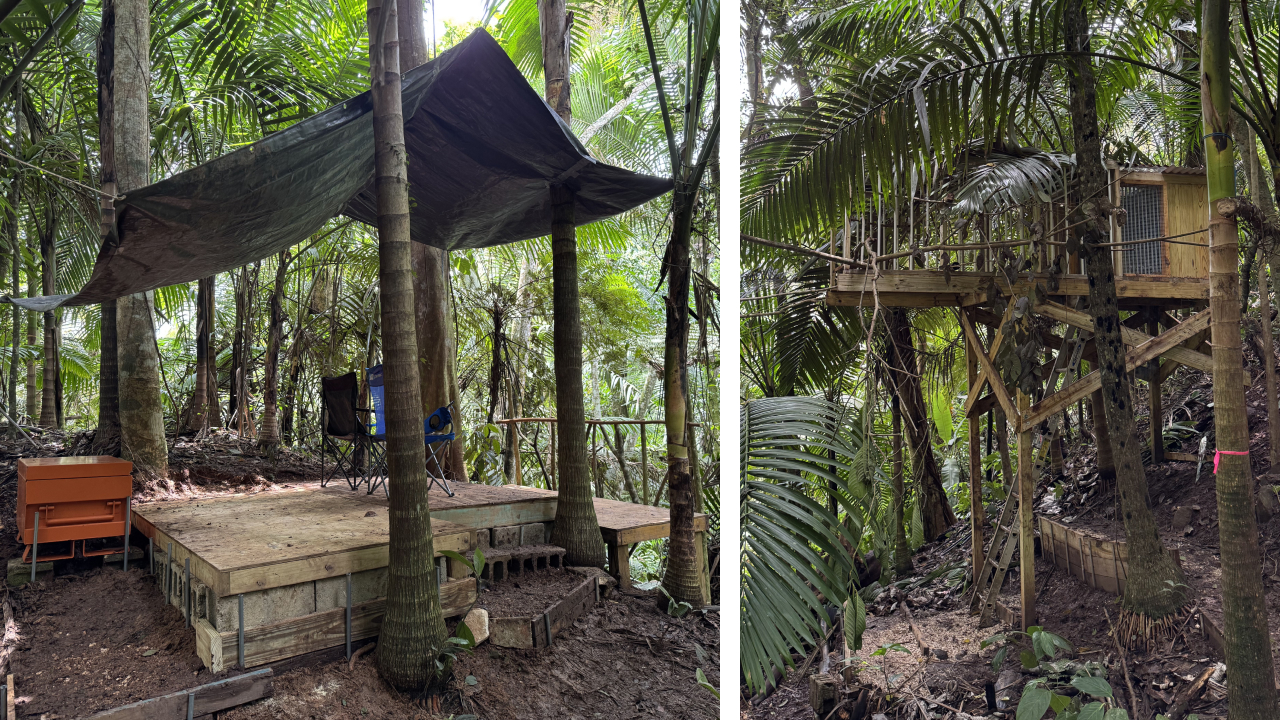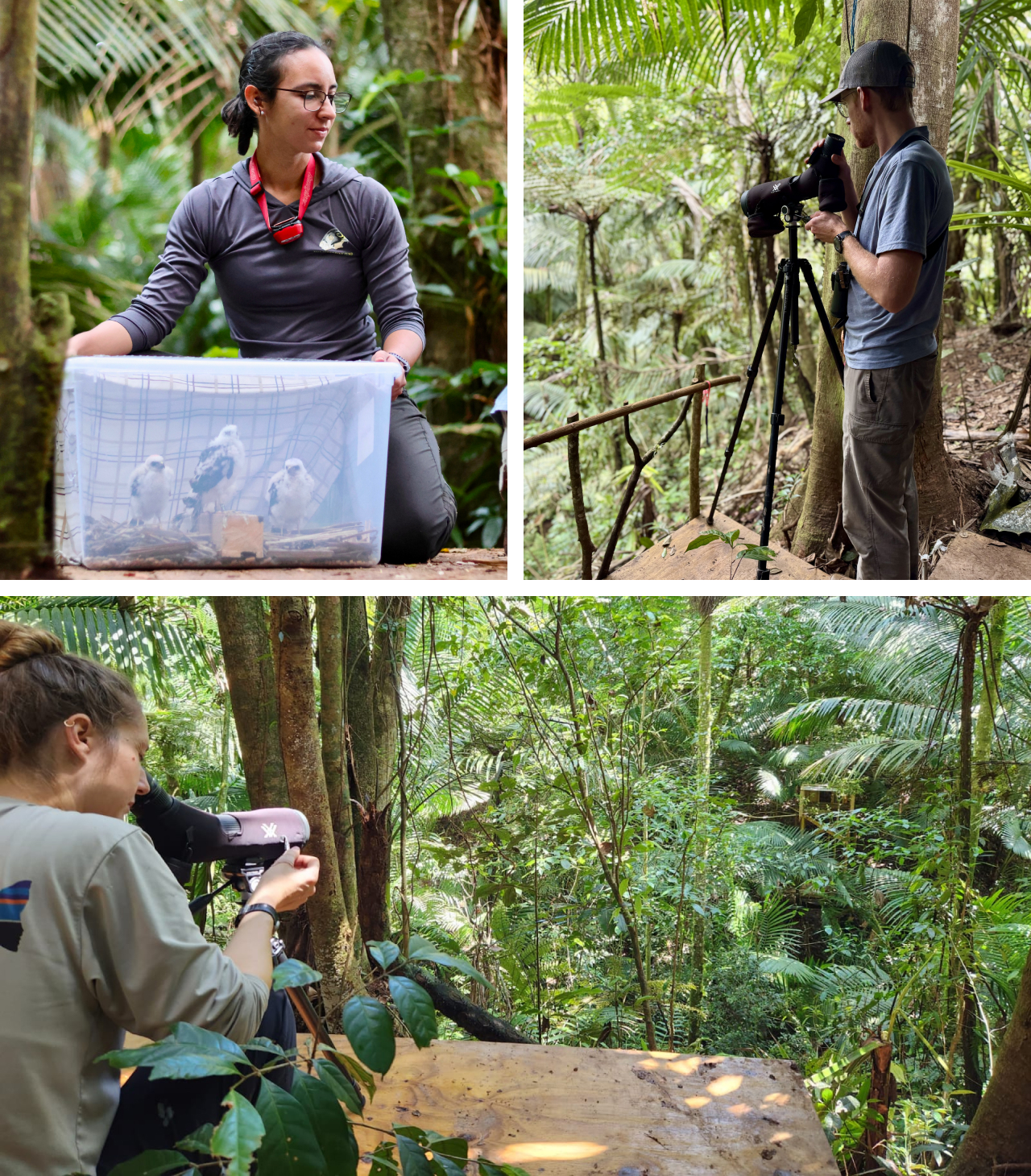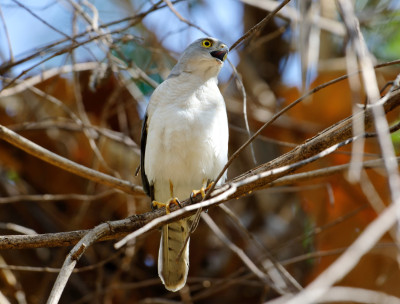
Hana Weaver
Puerto Rico Program “Hacking it” For Young Hawks
This past year, our Puerto Rico Program resumed propagation efforts for the Endangered Puerto Rican Sharp-shinned Hawk for the first time since 2021. The team collected eggs from wild hawk nests and raised the young in captivity while the adult hawks re-nested, thereby approximately doubling productivity. But while much of the equipment used in 2021 was still there and just needed updating, one step of the process needed to be rebuilt from scratch.
“After a three-year hiatus, the tropical environment of Puerto Rico had essentially reclaimed our first hack site,” reports our Puerto Rico Program Director, Hana Weaver. Hacking refers to the process of placing human-reared birds that are nearing the age of leaving the nest into a safe “hack box” out in the wild (pictured in banner photo above). Food is provided at the site, and the young birds are free to leave when they’re ready and return as often as needed for supplemental feedings until they’re able to survive on their own. This “soft release” process gives the youngsters the best possible chance of success in the wild—but it only works when there’s a hack site to use.
And so, on the property of our non-profit partner Casa Pueblo, the team went to work. “Through a lot of mud, river crossings, heavy rains, and slippery slopes, the team hauled gravel and lumber, reinforced trails, and constructed a observation deck (pictured at left below) and hack tower & box (pictured at right below), all over the span of just about one month,” says Hana with pride. “And this was on top of continuing to monitor and manage wild pairs and our quickly developing eggs at the propagation facility.”
The first young hawks were fitted with radio transmitters and unique leg bands and placed in the hack tower on June 1 (pictured at top left below). From that moment on, the team’s days began at 4:30am with food preparation. “We place the supplemental food on the tower in the dark so the hawks don’t associate humans with food,” explains Hana. Once the sun came up, the team then used the bands and transmitters to monitor each individual hawk’s feeding activity and behavioral development. They also discouraged predators like Red-tailed Hawks, cats, and mongooses from coming into the area where the young and naïve hawks are branching out into the wild world.
The final young hawk last appeared at the hack tower on August 5 before dispersing into the wild, marking the end of a successful season that saw a total of nine human-reared birds join the wild population. We’re already looking forward to next year!









